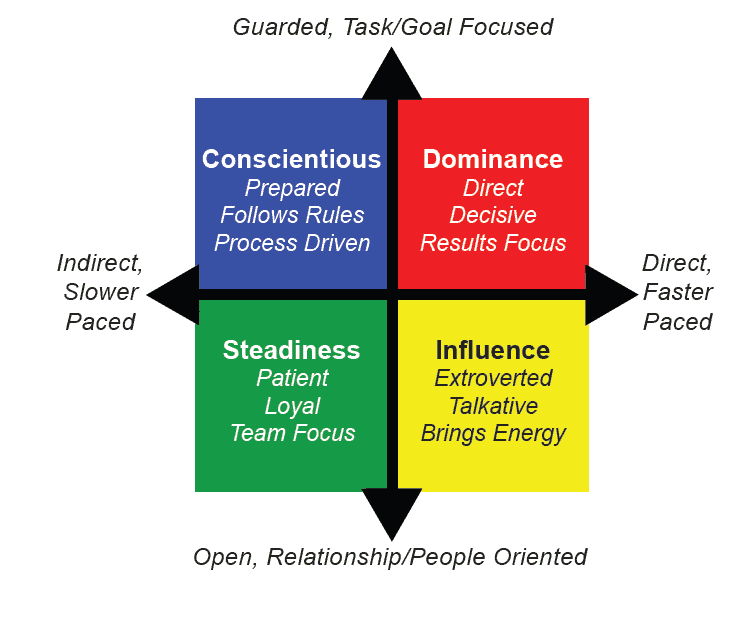The History of DISC and Application to Sport
The original DISC model was first developed in the 1920’s and has been continually developed, extended and improved on since, including the Athlete Assessments DISC Profiles which are specifically focused on the application within sport. Let’s delve into the history behind this modern-day suite of assessments.
Who created DISC?
In the early 1920’s, an American psychologist named William Moulton Marston developed a theory to explain people’s emotional responses. Until that time, work of this kind had been mainly confined to understanding the mentally ill or criminally insane. Marston wanted to extend these ideas to cover the behavior of what we know as ‘normal’ individuals. Marston’s fascination with people led him to many discoveries, while being a contemporary of Sigmund Freud and Carl Jung. Marston was also the creator of the comic figure Wonder Woman, and the inventor of the lie detector test.
In order to test his theories, Marston needed some way of measuring the behavioral styles he was trying to describe. His solution was to develop his own technique to measure four important factors – a four quadrant behavioral model. (Although, the history of four quadrant models for describing behavior begins a long time before Marston and you can read more about that history too.)
The factors Marston studied were Dominance, Inducement (now referred to as Influence and in some DISC models Interactive), Submission (now referred to as Steadiness) and Compliance (now referred to as Conscientious), from which the theory takes its name – DISC. Marston discovered that people do things for various reasons and are motivated by their reasons, not ours, and recognized that one individual could possess many traits, to more or less of a degree.
In 1928, Marston published his findings in a book entitled The Emotions of Normal People, which included a description of the system he had developed. It was the first time the four styles were identified as dynamic and situational which means the styles people displayed could change depending upon environmental factors and differing situations. The DISC model has continued to be researched and today is recognized as the most valid and reliable behavioral profiling tool to develop self-awareness. More than 50 million people worldwide from all differing contexts such as corporate leaders, industry professionals, managers, salespeople, teachers, coaches and athletes have used DISC to improve their understanding of themselves and their behaviors.

A major step forward in the advances of DISC came with the development of the ‘DISC Graph’ or ‘DISC Profile’, a graphical shape representing aspects of a person’s behavior in a form that was easy to understand with little experience or training. The use of Graphs made it possible to present the complex results produced by a behavioral profile, in the form of a simple profile ‘shape’ that could be understood and interpreted by any user. While training is still necessary to deeply analyze a DISC profile shape, the psychological and statistical background that had once been a prerequisite of profiling was no longer necessary.
It is widely acknowledged, we each have our own unique style of learning, communicating, leading, coaching and working within teams. As none of us are the same, each of us requires a different approach in order for us to be our best. DISC gives you the keys to unlocking your strengths and building on your limitations and understanding others so you can collaborate effectively to create improved results and relationships.
It is the DISC model, along with the internationally recognized and respected work of Dr Tony Alessandra, that served as a foundation for the development of which served as a foundation for the development of Athlete Assessments’ suite of DISC Profiles specifically for sport.
Athlete Assessments was founded by Bo Hanson, four-time Australian Olympian and three-time Olympic bronze medal winner in rowing. Prior to retiring from his competitive career in 2004, Bo became an expert in DISC behavioral theory and application. At that time, DISC Profiling was most relevant to those in the business world. While it was useful to Bo as an athlete, he observed that it wasn’t designed to meet the specific needs of sport.
Working with a team of passionate experts including sports coaches, IT developers and other DISC accredited professionals, Bo developed the AthleteDISC Profile and founded Athlete Assessments in 2007. This was followed by the release of the CoachDISC Profile in early 2009 specifically for coaches and trainers, and the Sports ManagerDISC Profile was launched in 2011 as the latest professional development tool specifically for sports administrators and other sports professionals.
Over the last decade and a half, Athlete Assessments has continued to innovate and extend on their portfolio of services and products available, and made them available in other languages such as Japanese and Hungarian.
Learn more about the three different types of DISC Profiles provided by Athlete Assessments – one specifically for coaches (the CoachDISC Profile), athletes (the AthleteDISC Profile) and sports administrators and other professionals (the Sports ManagerDISC Profile).
Learn more about Athlete Assessments
DISC Profiling
Learn how to master the people side of sport using DISC Profiling...
What We Do
We specialize in helping our clients create and sustain winning results...
Resources
Stay at the forefront with access to our resources, articles and videos





